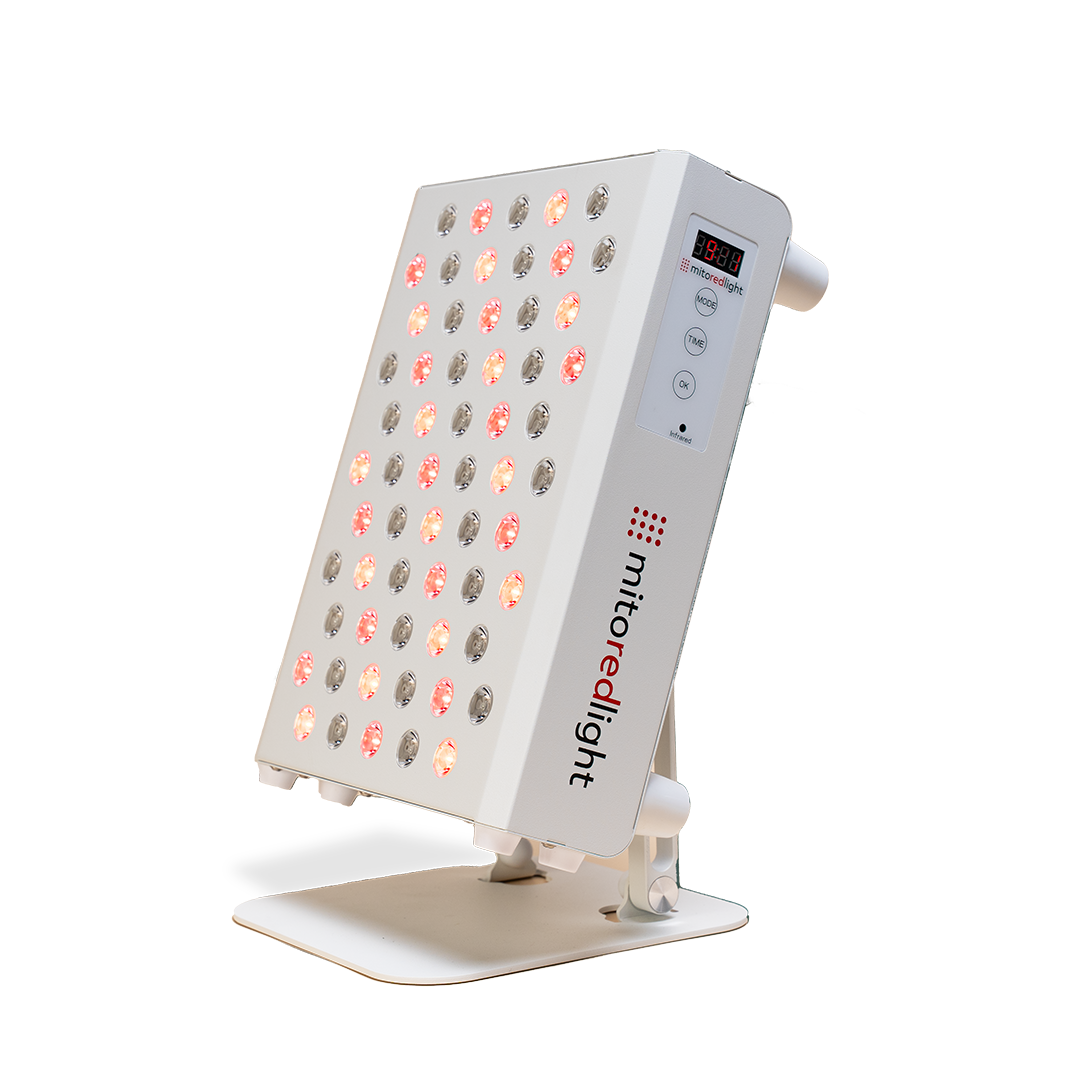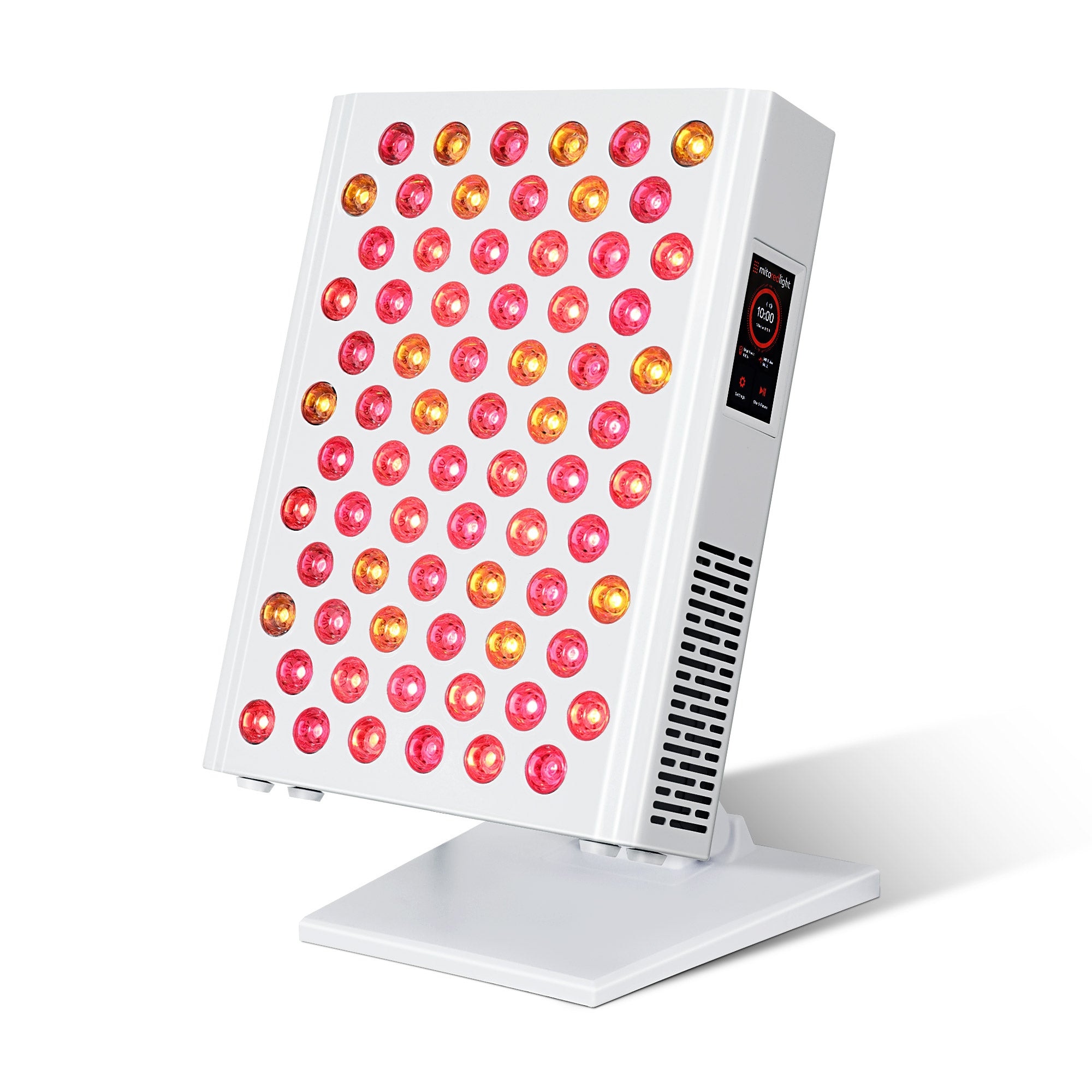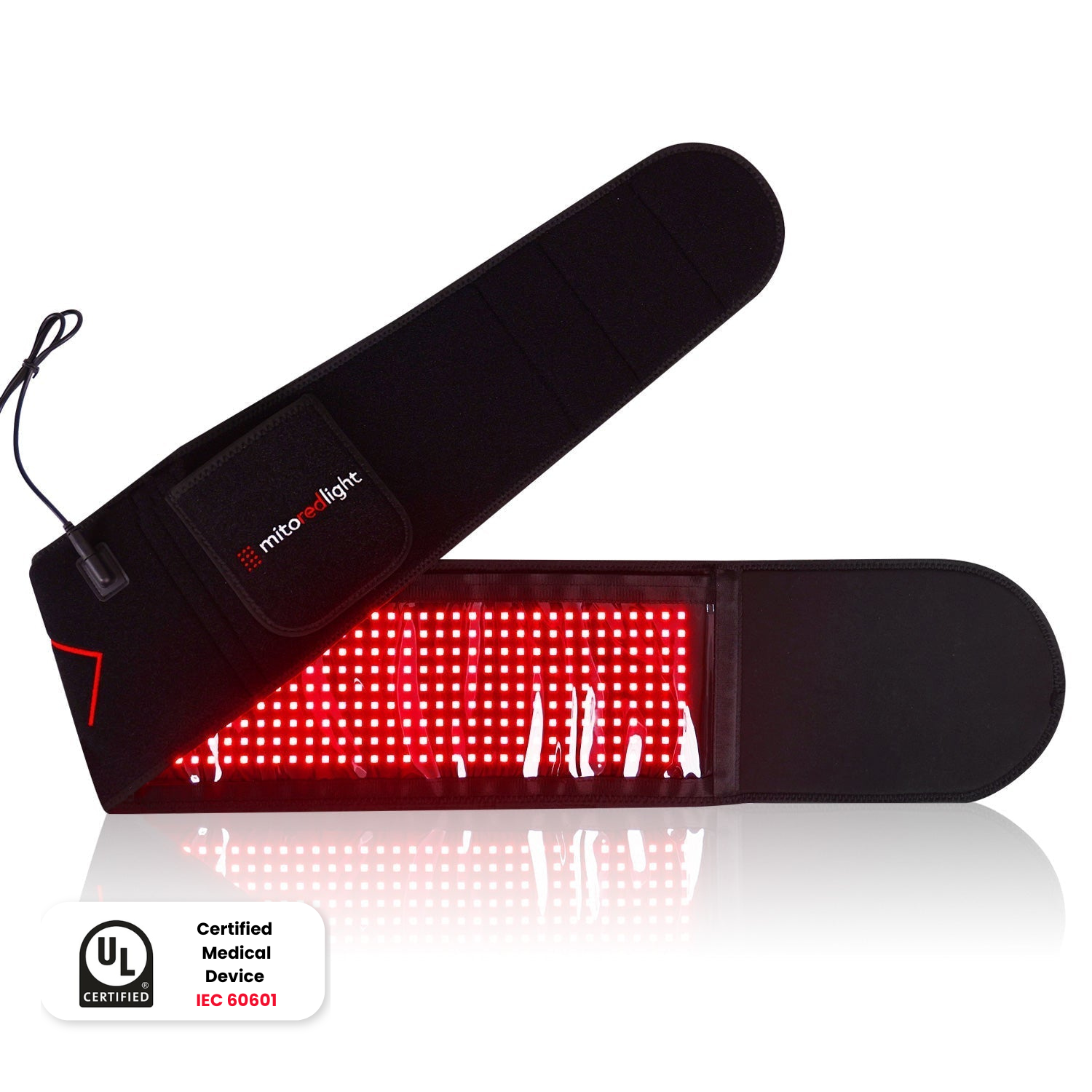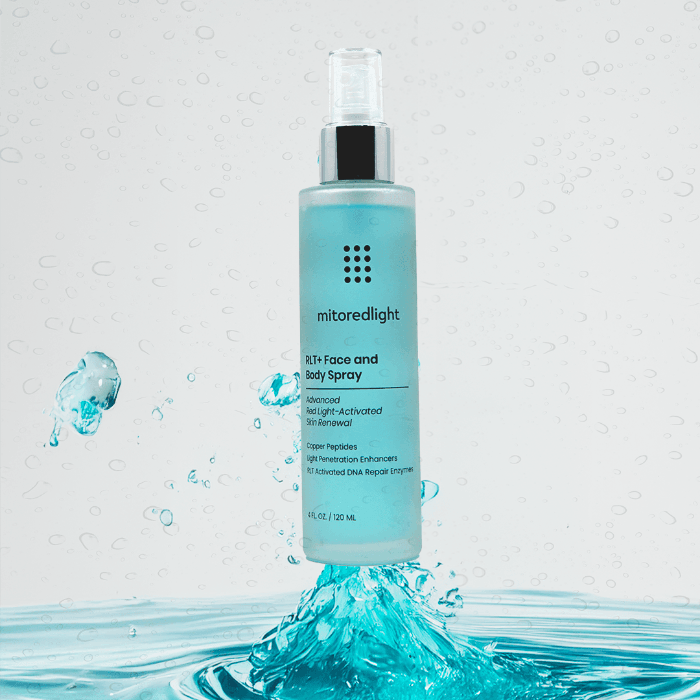DISCLAIMER: Mito Red Light devices are Class II wellness devices aimed at affecting the body through topical heating and supporting cellular function. The information provided in this article and on this site is for educational purposes only and is not intended to imply effectiveness of Mito Red Light devices for any specific application. The information provided in this article and on this site is not intended to diagnose, treat, cure, or prevent any disease, is not a substitute for consultation with a licensed medical provider and should not be construed as medical advice. Click here to read our article on potential contraindications of red light therapy..
Neurological Effects of Red Light Therapy
Summary:
Red light therapy, utilizing specific wavelengths of red and near-infrared light, has gained traction since the 1990s for various applications, including pain management, workout enhancement, and wound healing. While research continues to expand its understanding and applications, a promising new area of study focuses on its neurological and psychological effects. Emerging research indicates potential benefits in reducing stroke injury size, protecting brain cells, and even treating neurodegenerative and neuropsychiatric disorders. This non-invasive, safe, and potentially inexpensive therapy works by allowing light to penetrate tissues and interact with mitochondria, stimulating cellular processes. Ongoing research aims to optimize its use for brain health, highlighting the need for devices capable of effective tissue penetration.
Key Takeaways:
- Red light therapy is a growing field with established benefits and newly explored neurological applications.
- Research suggests red light therapy may positively impact traumatic brain events, degenerative diseases, and neuropsychiatric disorders.
- The therapy is believed to work by stimulating cellular mitochondria, influencing energy production, inflammation, and regeneration.
- Compared to UV light, red light has a longer wavelength allowing for deeper tissue penetration and effects beyond the skin.
- Future research will focus on optimizing delivery methods and further understanding the mechanisms and efficacy of red light therapy for neurological health.
Written by: Benjamin Caleb Williams
Red light therapy is a more recent technological advance that began to gain popularity in the 1990s as the LED technology needed to efficiently use this form of therapy became practical and as its potential applications were better understood. Red light therapy is used by many people for a variety of purposes, including managing their pain, improving workout performances, promoting wound healing, and much more.
Like most newer forms of medically-related technology, the field of red light therapy is experiencing a rapid expansion, with new applications still being discovered and with existing benefits becoming more fully understood. While research is still ongoing into many of the uses of red light therapy, the benefits that people are seeing from therapy is causing this trend to grow in its popularity.
One of the newest potential applications for red light therapy that is only beginning to be studied is the possible neurological and psychological effects that it may offer. Recent research has shown promise in reducing the size of stroke injuries, protecting brain cells, and even treating neurological diseases like Parkinson’s disease and Alzheimer’s disease.
The Science of Red Light Therapy
Red light therapy, at its core, involves illuminating an area of tissues with specific wavelengths of red or near-infrared (NIR) light. The light penetrates into the tissues and is thought to stimulate cells to bring about positive effects.
To someone who has never heard of red light therapy, the concept may initially sound like something that does not have a solid scientific basis. The basic underlying principles of red light therapy, however, have a very sound scientific precedence and are logically based.
Light and the Body
The best way to illustrate how the idea that rays of red light could have an effect on the body is consistent with proven science is to examine the well-established effects another type of light has on the body.
Ultraviolet (UV) light is about 10% of the light created by the sun and has several well-established effects on the body. UV light has been conclusively proven to:
- Stimulate vitamin D production - Vitamin D is an important nutrient that affects bone and immune health. UVB light stimulates the cells of the skin to produce vitamin D, and the primary source of vitamin D is from natural or artificial sunlight.
- Stimulate melanin production - Melanin is a molecule that protects your skin from sun damage and makes your skin darker. When someone tans from being in the sun, the UV light has influenced the biological function of their cells to stimulate them to create more melanin than they normally would.
- Break down bilirubin - Bilirubin is a molecule that accumulates when red blood cells are broken down. Most adults and children are able to easily break bilirubin down naturally, however, newborns cannot. Hospitals use UV light to treat newborns that have too much bilirubin, helping them to avoid the severe effects they would experience from bilirubin toxicity - effects like permanent brain damage.
The proven effects of UV light on the body illustrate that light interacting with the cells of the body is able to create biological changes.
Red Light vs. UV Light
While UV wavelengths of light and red or NIR wavelengths of light are both thought to have an effect on the body, there are some important differences between these two wavelengths.
UV light is a high-energy form of light with a short wavelength, while red light is a lower-energy form of light with a long wavelength. The shorter wavelengths of UV light make it difficult for this light to penetrate deep into the body tissues, and all of the known biological effects of UV light are related to the skin.
Conversely, because of its longer wavelength, red light can penetrate deep into tissues beneath the skin, affecting cells that are far less visible and many times more important than skin cells. The deeper effects of red light that affect less visible parts of the body may be one of the primary reasons that the effects of red light have not been recognized as quickly as UV light.
How Does Red Light Therapy Work?
Because red light therapy is a newer form of therapy, there is still ongoing research into how it provides its biological effects. The main hypothesis that is currently given the most serious consideration is that red wavelengths of light interact with mitochondria, a tiny cellular organ found in almost all cells. Mitochondria are very important in managing inflammation, producing energy for the cells, and promoting cell regeneration - three important effects that red light therapy seems to influence.
Red Light Therapy and the Brain
One of the less studied and perhaps more impactful applications of red light therapy is the potential neurological benefits that it may offer. Research into utilizing red light therapy for brain health is very new. However, emerging studies have shown some initial promise that may change how red light therapies are used in the future.
Recent Research
A recent study conducted by researchers from the United States, South Africa, Iran, and Germany and published in October of 2021 showed that photobiomodulation (another term for light therapy) using red and NIR light had been shown by multiple studies to have a positive effect on brain health. Published in the Journal of Alzheimer’s Disease, this study reviewed nine different research papers on the effects of red light therapy relating to brain health and showed that red light therapy does have promising neurological effects.
The International group of researchers divided the types of neurological conditions in which red light therapy was shown to be beneficial into three key categories:
- Traumatic events - This includes conditions such as strokes and traumatic brain injuries.
- Degenerative diseases - This includes some major neurological diseases such as dementia, Alzheimer’s disease, and Parkinson’s disease.
- Neuropsychiatric disorders - This primarily refers to psychiatric conditions that have neurological causes and includes major depression, bipolar disorder, anxiety, and post-traumatic stress disorder (PTSD).
The researchers write, “Brain PBM [photobiomodulation] therapy is safe, simple, pain-free, inexpensive, easy to administer, and well-tolerated by the patients in almost all clinical studies.”
They also note that red light therapy has been shown to be able to penetrate the skull, writing, “Brain PBM therapy is a promising modality by which red to near-infrared light emitted by lasers or light emitting diodes (LEDs) is delivered to the scalp to stimulate neural cells and brain function. It is well known that photons in this wavelength range are able to penetrate the scalp/skull and partially reach the brain tissue.”
The researchers ultimately conclude, “We expect PBM to continue to be investigated to treat diverse brain disorders, considering the evidence of efficacy, almost complete lack of adverse effects, and the availability of relatively inexpensive LED devices that can be used at home.”

Other Research
While the research recently published in the Journal of Alzheimer’s Disease is one of the strongest reviews of existing studies in this field, there are other studies not referenced in the research that have also shown promising results. Research conducted at the VA Boston Healthcare System in 2015 found increased blood flow in the brain and stimulation of mitochondria with red light therapy, spurring the demand for more research into red light therapy for treating veterans who have experienced war-related brain injuries.
Another important study published in the Journal of Neurotrauma in 2014 served as an important initial pilot into researching the effects of red light therapy on the brain. This study used red light therapy to treat mild, chronic traumatic brain injury and found quantifiable improvements during the course of red light therapy.
Considerations for Neurological Treatment
While the potential uses of red light therapy for brain health are very exciting, this is still a very new field, and this research is still in its infancy. There will be more ongoing research into how red light therapy interacts with the brain, the best ways to administer it, and the effects that can be shown.
Perhaps the most important implication relating to the promotion of brain health is that red light therapy is a non-invasive, highly safe method of providing neurological therapies. As research continues to emerge, this form of therapy may offer people a way to improve their brain health that is safer and easier than many other forms of therapy.
One important consideration for using red light therapy for neurological purposes will be using therapy sources that can administer light with the intensity needed to penetrate the skull and reach brain tissues.
Theodore Henderson, MD, Ph.D., president and principal owner of The Synaptic Space, a neuroimaging consulting firm, and owner of Neuro-Luminance Corporation, recently wrote in a blog post that having a device that is able to effectively penetrate human tissue is a vital consideration for the future of red light therapy as it pertains to brain health.
Mito Red Light Inc is a leader in red light therapy and red light therapy for home products. Mito Red offers a variety of red light therapy products known for their quality. We welcome you to review our selection of high-quality red light therapy devices or to contact one of our expert representatives at +1 866-861-6486 to learn more.
Related Articles:
- An Overview of Uses of Red Light Therapy
- The History of Red Light Therapy: A Comprehensive Timeline
- What Is Red and Near Infrared (NIR) Light Therapy?
- Red Light Therapy Buyer’s Guide

























